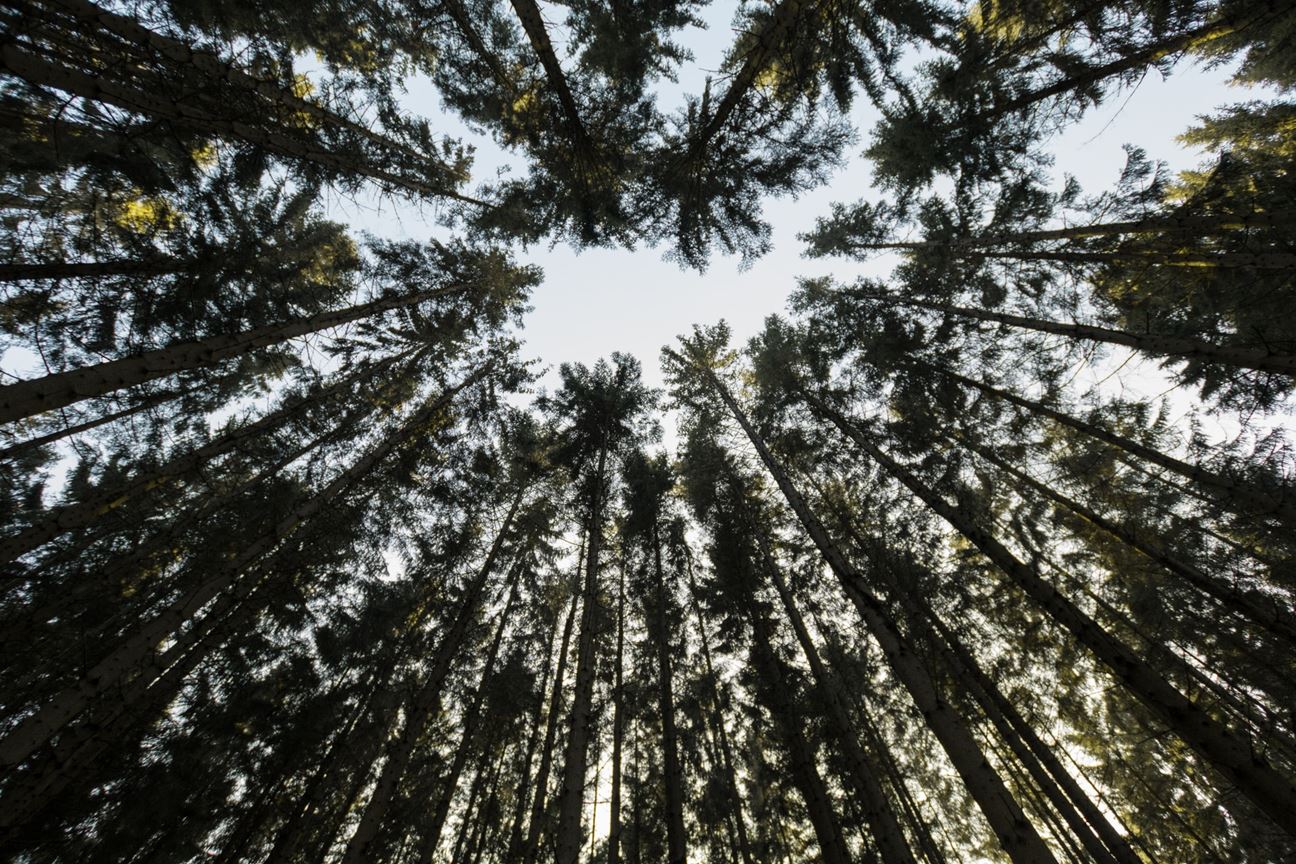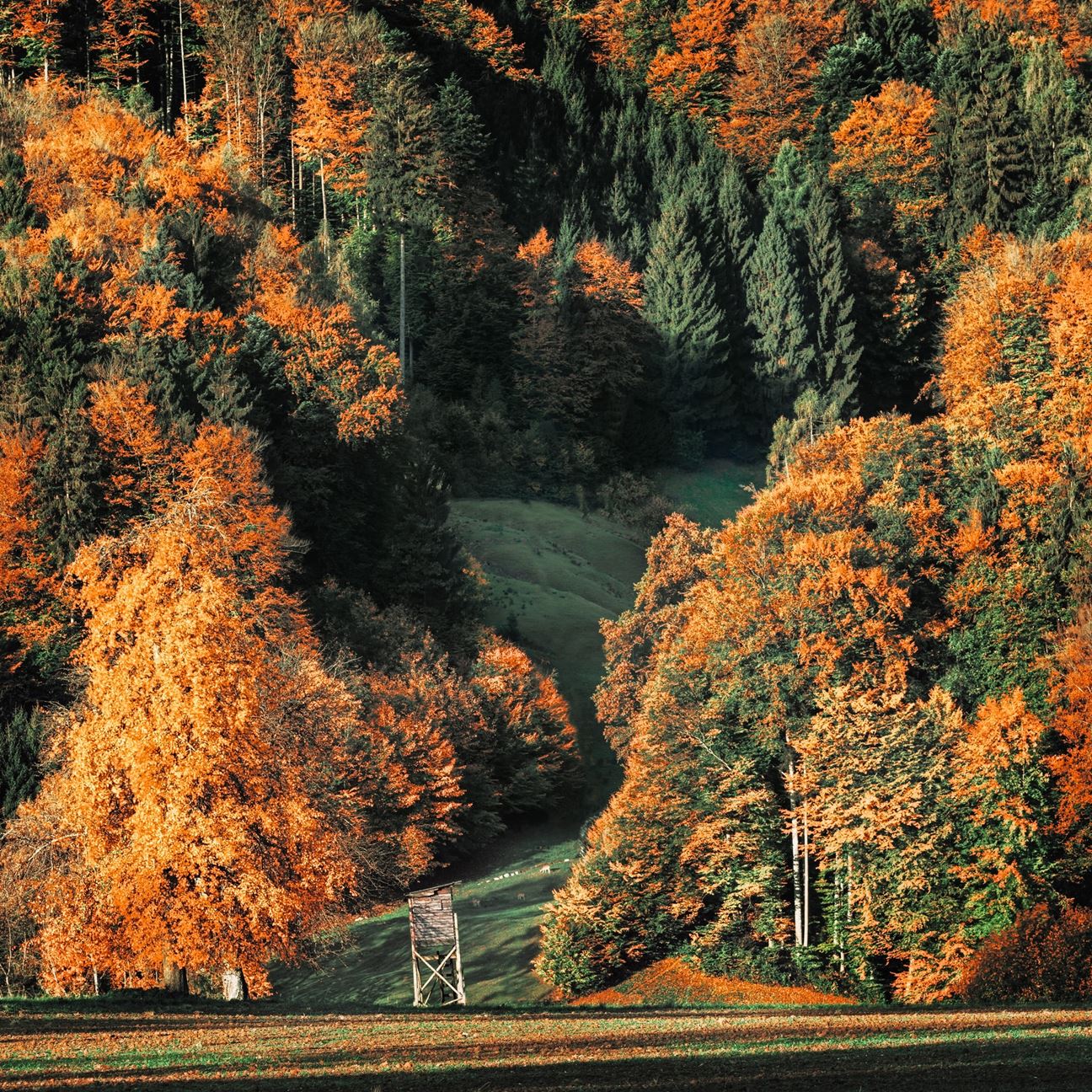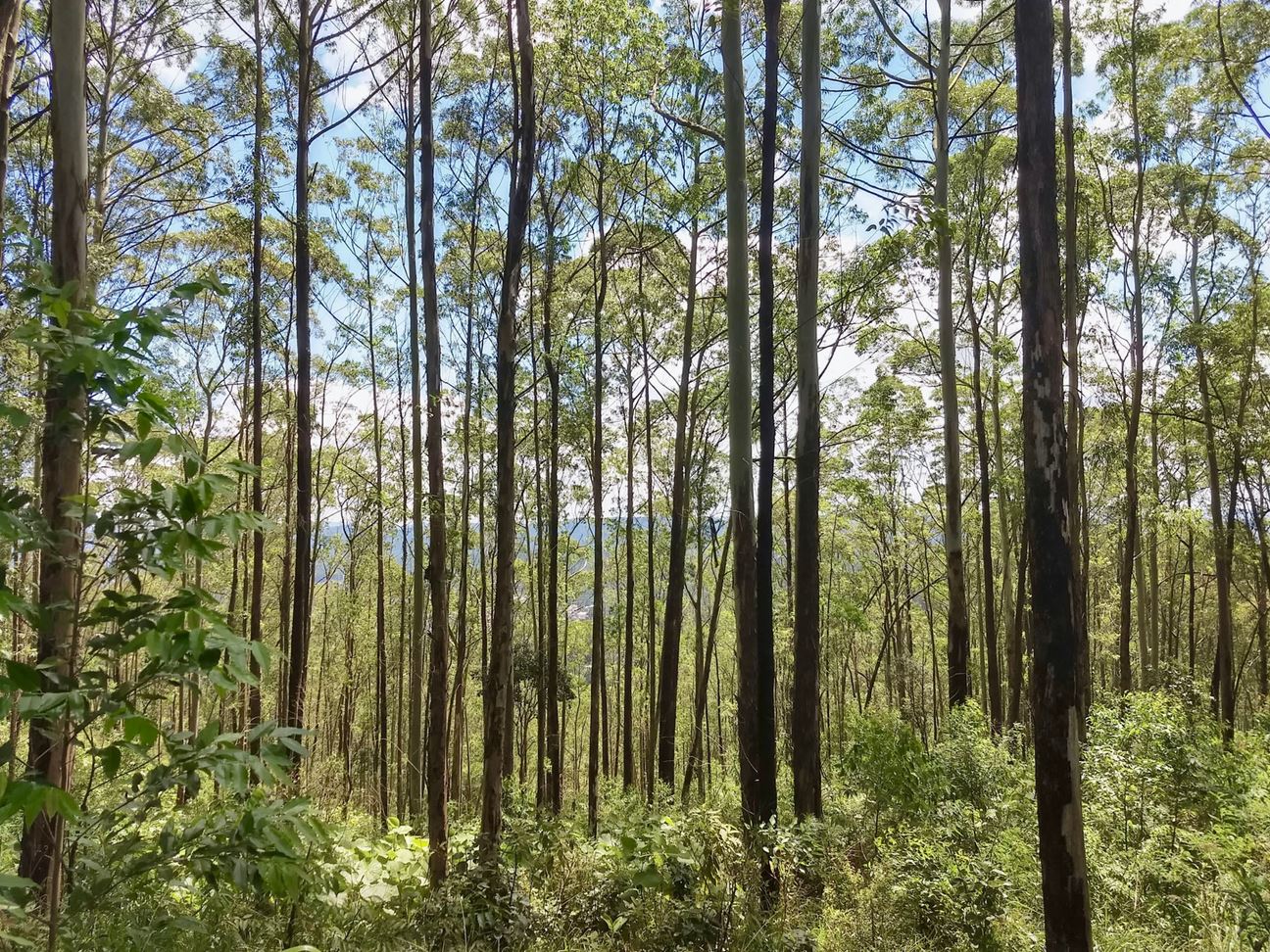It is full of life -- floor to canopy. An important biome, the ever-giving temperate forests are home to spectacular bio-diversity!
Temperate forests are cool, dense, not-so-rainy forests that are found at the mid-latitudes all over the world. They are home to a variety of living organisms including trees of various sizes, abundant wildlife, and feature a broad range of climatic conditions! There are four main zones in which these forests fall. As you read further, you will come to know how they differ from one another, plus the vegetation and wildlife that they support.
 A coniferous forest in Gävle, Sweden
A coniferous forest in Gävle, Sweden
Location and Climate
As the name suggests, the temperate forests are found in the temperate zone of the earth. In the northern hemisphere, the temperate zone lies between the tropic of Cancer and the Arctic Circle, and in the southern hemisphere, it lies between the tropic of Capricorn and the Antarctic Circle. The temperate zone lies in the mid-latitude areas, between the tropical zone and the polar zone.
In one year, the temperate biome has four changing seasons - summer, fall, winter, and spring. The climate in the temperate zone is not too extreme - the summers are warm, the winters are cool, and spring and fall have moderate temperatures. The seasonal changes happen due to the sun hitting different parts of the earth due to tilt in its axis.
Zones of Temperate Forests
Covering almost 25% of the forest area on earth, the temperate forests are the second-largest biome on earth. Depending on their location, they are further divided into the following four types.
The Deciduous Temperate Forests
These forests are dominated by trees that lose their leaves seasonally. Deciduous forests are made up of a variety of deciduous trees. A deciduous tree is a tree whose leaves "fall off at maturity" at the end of the growing season. In the winter months, the temperatures drop and the daylight hours shorten, which results in decreased photosynthesis for plants. In response to the environmental conditions, these trees shed their leaves. New buds start to appear as the weather gets warmer and daylight hours increase.
 Fall colours of a deciduous forest
Fall colours of a deciduous forest
Some key characteristics of the deciduous temperate forests are abundant moisture, rich soil, and distinct seasons. Northern Hardwood, Central Hardwood, and Southeast Pine and Oak are the main types of these forests.
Location - The deciduous forests are found in areas that annually have four distinct seasons. They are typically found in the northern hemisphere, in parts of Eastern United States, Western, Central and Northern Europe, Eastern Asia, including China and Japan.
Climate - The temperate deciduous forests receive the second-highest rainfall, and the air is moist almost all year long. The average annual temperature in temperate deciduous forests ranges between 10°C and 15°C. And the average annual precipitation ranges between 30 - 60 inches (75 - 150 centimetres).
Vegetation - The thick soil humus and minerals present in the soil in the temperate zones, along with abundant annual rainfall, helps support a variety of vegetation and plant life in these forests. The vegetation found here exists in various layers, from the ground layer to stretching high above the forest canopy. A forest is made up of five different layers. Let us have a look at the vegetation each of this layer supports.
- Floor - Non-vascular plants like club mosses, true mosses, and lichens are found here. They grow on exposed soil surfaces, tree trunks, rocks, and stones.
- Herb - Flowering plants such as blue bead lily, sarsaparilla, Indian cucumber, trillium, wild sarsaparilla, and purple clematis grow in this tier. Before dying down due to the lack of sunlight reaching the ground, these trees explode with flowers.
- Shrub - Perennially woody shrubs have multiple stems and varying heights. They are much-branched and dense and do not usually grow taller than 10 feet. Examples of deciduous shrubs include azaleas, rhododendrons, mountain laurel, blackberries, huckleberries, and a few spices.
- Understory (Small tree) - This stratum is made up of small trees, including the younger trees, which may or may not attain full maturity. These trees usually ‘decorate’ the forests and burst out in a variety of colours during spring and fall. Trees include Ginko, dogwoods, shadbush, redbuds, and serviceberry.
- Canopy - Trees reaching the heights of 60 to 100 feet fall in this tier. They include oak, walnut, maple, birch, basswood, linden, black cherry, sweetgum, and sycamore.
Wildlife - As with the vegetation, the temperate forests also support a variety of animal life. This includes insects and spiders, mammals like rabbits, raccoons, coyotes, wolves, foxes, mountain goats, and bobcats. Common birds found in deciduous forests include hummingbirds, robins, jays, and woodpeckers. Due to the changes in the seasons, the animals have adapted ways to deal with them - including hibernation and migration. Some animals also camouflage themselves to blend with their surroundings.
The Coniferous Temperate Forests
Coniferous, also known as "cone-bearing" trees, are known to have a shape of a cone towards their top. These trees have needle-shaped leaves that are evergreen. Meaning, they do not shed seasonally like the deciduous trees. Coniferous trees are known to retain their foliage throughout the year, even when it snows!
Location - The temperate coniferous forest is found between the tundra and deciduous forests, in low and middle latitudes of North America, Europe, and Asia. They also grow at high elevations in the mountains.
Climate - Most coniferous temperate forests grow in areas with long, cold, and snowy winters. The annual temperature ranges between -40°C to 20°C. The annual precipitation ranges from 10 to 35 inches (30 - 90 centimetres)
Vegetation - In general, the trees are either angiosperm (broadleaf) or gymnosperms (clustered scales). Conifer trees are known to be the most successful group of gymnosperms, and also the largest.
 sky-high conifers at Sisjön, Askim, Sweden
sky-high conifers at Sisjön, Askim, Sweden
Like most forests of the world, coniferous forests also contain a variety of vegetation. Some deciduous trees (trees that shed leaves annually) may also be found within the forest limits. Most coniferous trees grow out from a single branch, or trunk and can live up to 250 years. Bristlecone pines found in the western part of the United States are known to be as old as 5000 years! These trees are known to grow upwards, with very few branches. As the tree grows, its trunk thickens - adding a new ring (or layer) of cells which can be used to determine the tree's age.
Let us look at some of the most common types of trees found in coniferous forests.
- Parana Pine - These pines are found in the hilly regions of Brazil and Argentina and can reach a height of 150 feet (46 meters). These trees are an important source of timber as their trunks have no branches up to 100 feet (30 meters)
- Lodgepole Pine - Their cones are yellowish-brown, with needles as long as 2 inches (5 centimeters)! These trees are very straight and are primarily found along the Alaskan coast, in British Columbia, the Pacific Northwest, and the Rocky Mountains. People use these trees to support their lodges, hence the name.
- Deodar Cedar - Also called the Himalayan Cedar, these conifers are native to the Himalayas and are found in Afghanistan, Pakistan, India, Tibet, and Nepal. They are evergreen and appear deep blue and greenish in colors. The trees can reach high as 130–165 feet (40-50 meters)
- English Yews - Native to North Africa and Scandinavia, Yews are also found in the Himalayas, Great Britain, Syria, and Iran. Yews are poisonous and are used for medicinal purposes. They do not grow very tall and can reach a maximum height of 80 feet (25 meters).
- Norway Spruce - The cones of this spruce produce so much pollen that the entire forest turns yellow! Norway spruces can be found in Europe and Asia and are known to grow as high as 150 feet (46 meters).
- Douglas Fir - Commonly used as Christmas Trees in North America, the Douglas Firs are strong, and its timber wood is often used in the making of boats, aircraft, and construction.
Wildlife - These forests support a wide range of animal life. From microorganisms and invertebrates to amphibians, reptiles, birds, and mammals. As with any other forest, the woodland soil contains bacteria that help decompose dead matter. Worms, wasps, and snails are found in ponds, lakes, and streams here; and so are the amphibians such as toads, frogs, and salamanders. Reptiles such as lizards, turtles, and snakes are active mostly during the warm summer months and can hibernate during the cold winter months. The coniferous forests are home to many mammals, including minks, grizzly bears, wolverines, pine martins, red deer, moose, and elks among others. Common birds found in the coniferous forests include owls, cardinals, chickadees, weaverbirds, woodpeckers, blue jays, great horned owls, and many more.
The Broadleaf and Mixed Temperate Forests
The World Wide Fund for Nature defines temperate broadleaf and mixed forest as ecoregions with both broadleaf trees and coniferous trees. They are found in temperate and humid regions and are characterised by the transition between the broad-leaved deciduous forests and coniferous forests. Almost all the broadleaf trees are deciduous. But there are a few exceptions where broadleaf trees stay evergreen. Examples include Bamboo Leaf Oak, Emerald Gaiety Euonymus, and Blondy Euonymus.
 A mix of deciduous and evergreen trees
A mix of deciduous and evergreen trees
So what is a mixed forest? Mixed forests are home to two basic types of trees - deciduous and evergreen. To call a forest mixed, neither of the trees alone should cover over 75% of the forest cover. That is to say that two or more dominant kinds of trees cover the forest area. Also, over 20% of the trees in a mixed forest should be over 5 metres tall.
Location - Globally, these forests are found in distinctive ecoregions such as the Caucasus, Southern Europe, Western Australia, New Zealand, the Himalayas, Central China, Russian Far East, and Eastern North America.
Climate - These forests are typically found in regions with annual moderate temperatures, ranging between 0°C to 15°C. Except for the winter in East Asia, most of the forest regions are warm and rainy. Most part of the year is humid and the average annual rainfall is approximately 1000 millimetres.
Vegetation - These forests are characterized by the following four layers: canopy, smaller but mature trees, shrub, and grasses & herbaceous plants. As the name suggests, these forests are a mix of deciduous (trees that shed leaves annually) and conifers (trees that do not shed leaves annually). Broadleaf trees are common in deciduous forests but can also be found in evergreen forests. These are groups of angiosperms with broad and flat leaves (as opposed to the needle-like leaves of the conifers). Dominant broadleaf species of trees in the northern hemisphere include beeches, birches, maples, and oaks. While the most typical conifers include firs, spruces, and pines.
Wildlife- North American red squirrel, Ermine, Grey Wolf, Sika Deer, Griffon Vulture, Japanese dwarf flying squirrel, star-nosed mole, and Virginia opossum are a few of the animal species that live in the Broadleaf and Mixed Temperate Forests.
Examples of mixed forests - The northern part of New Zealand's South Island, The Northern Triangle Temperate Forests in Asia, East Central Texas forests, Western Siberian hemiboreal forests, and Celtic broadleaf forests.
The Temperate Rainforest Forests
Rainforests are known for the massive amount of rainfall they receive all year long. Temperate rainforests are no exceptions, but due to their locations, they feature a much cooler climate compared to the tropical rainforests. These forests can be either broadleaf or coniferous.
 A temperate rainforest dominated by the conifers in Atibaia, SP, Brasil
A temperate rainforest dominated by the conifers in Atibaia, SP, Brasil
Location - The temperate rainforests are usually found in moist regions near the coasts. A few also occur in subtropical climates. Pockets of temperate rainforests are found in North and South America, Africa, Europe, Asia, and Oceania. The Pacific temperate rainforest ecoregion features the largest of the temperate rainforest areas on earth.
Climate - Temperate rainforests are cooler and slightly less rainy compared to their tropical counterparts. Annually, on average, it rains between 150 and 500 centimetres. The rest of the moisture comes from the coastal fog, which additionally constituents to 30 and 50 centimetres of precipitation. When it comes to annual temperature, the mean falls between 5°C and 12 °C. While the weather is not too harsh, these forests see two distinct sessions - long and wet winter and short and drier summer.
Vegetation - Epiphytes (plants growing on other plants) are most commonly found in temperate rainforests. Ferns, lichens, mosses, and spike mosses are found everywhere which gives the forest its distinctive ‘green’ look. Orchids and bromeliads are also found in abundance in these forests. Most trees found in temperate rainforests are coniferous trees. While there are not many species, some dominant ones include Sitka spruce and western hemlock. These trees can live for more than 1000 years! Nurse logs and dead fallen wood are also found in abundance.
Wildlife - Some of the most commonly seen coastal temperate rainforest wildlife includes tree frogs, raccoons, salamanders, black bear, and wolves!
While deforestation and reforestation happen on a large scale, locally and globally, the temperate forests provide an important and unique ecosystem for the survival of many organisms in the world.